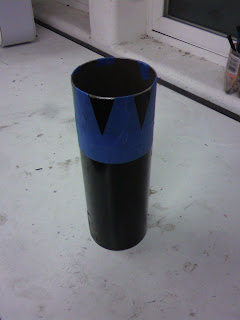Spud Gun
An overview of how to make it
The spud gun was constructed of the following:Barrel: 2" pvc pipe 5'4" long
Piece connecting barrel and chamber: 4" to 2" abs reducer
Chamber: 4" abs pipe 2' long
(The chamber was made of cellular core abs pipe, which is not the ideal material to use because it is not pressure rated. It depends who you ask as to if cellular core is safe to use or not for this purpose. You should ideally use pressure rated solid abs pipe, or pressure rated sch 40 4" pvc pipe.)
End Piece: 4" abs female adapter hub
(it fits on the outside of the chamber, and has threading inside which accepts the plug)
Far End Piece: 4" abs plug
You should glue abs to abs parts with abs glue, pvc to pvc parts with pvc glue, and abs to pvc with some sort of general purpose glue. I used pvc glue to hold the barrel to the abs reducer, and it has worked fine so far.
Ignition:

I took apart a lighter for the ignition source. There is a box piece with two pieces of wire coming out of it, which generates a spark. I drilled two holes at an angle in the combustion chamber, and put screws facing in towards each other for the spark gap. I then connected a wire to each screw, and glued the sparker to the side of the chamber. As you can see, I made a mess with the glue.
The gap between the screws is probably around 1/8". It will go off with a couple of clicks.

This is how the screws are oriented inside of the chamber. The red arrows are pointing at the screws.
The furthest the gun has shot is around 240 yards so far, using butane as a fuel source.
This is inherently dangerous, and should be done at your own risk.















